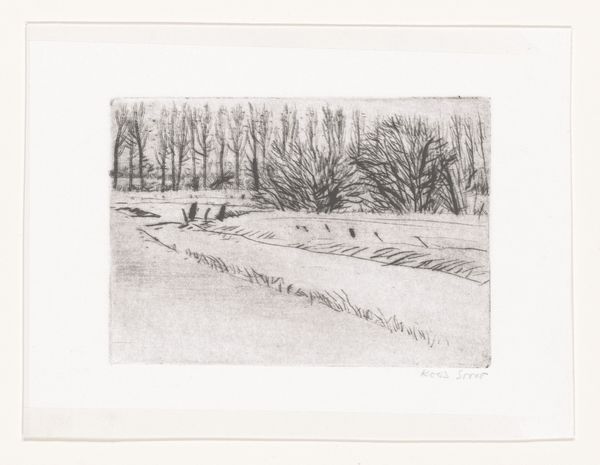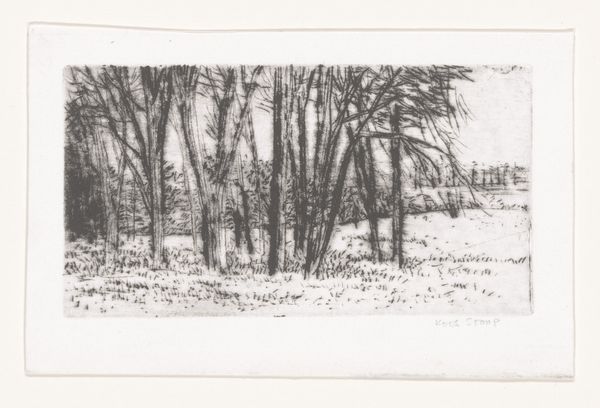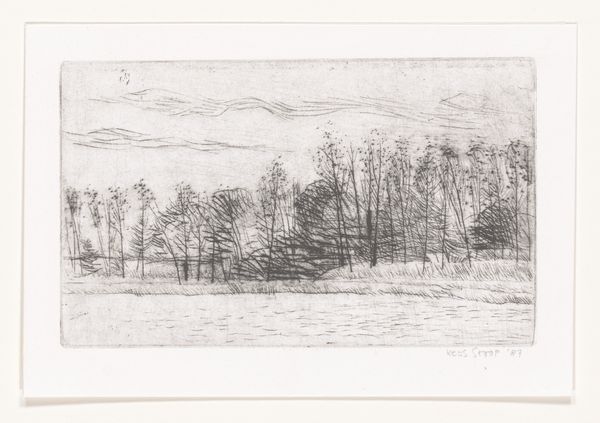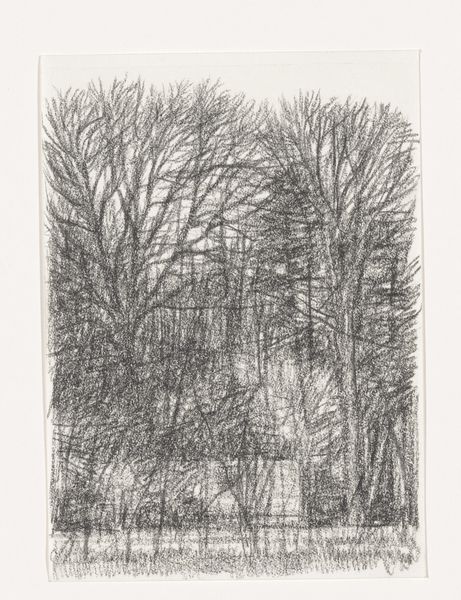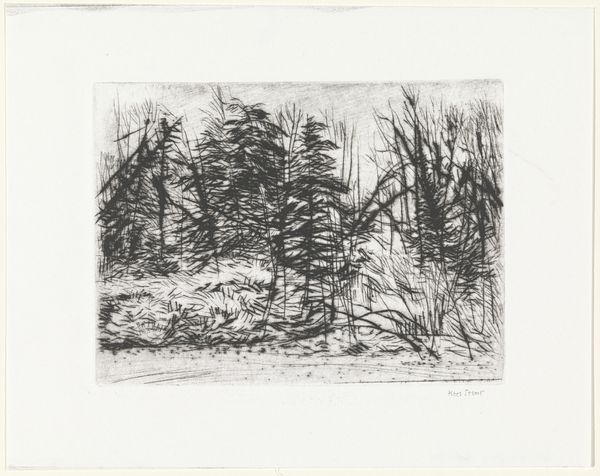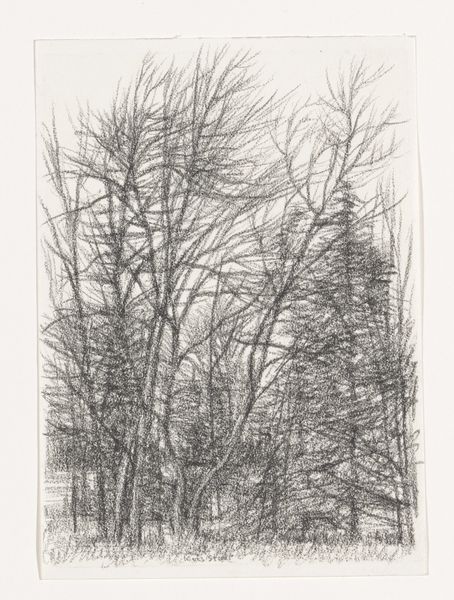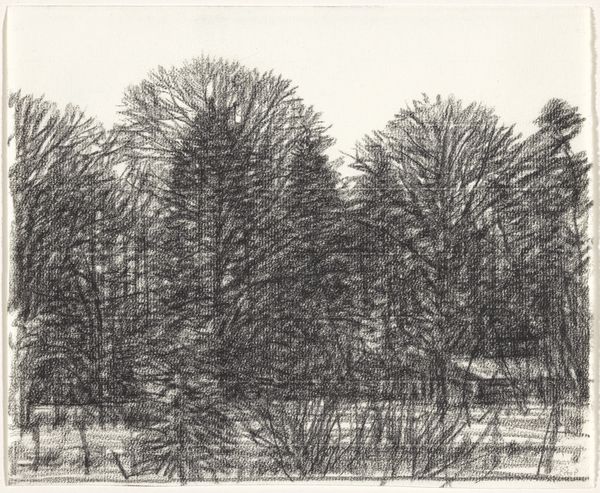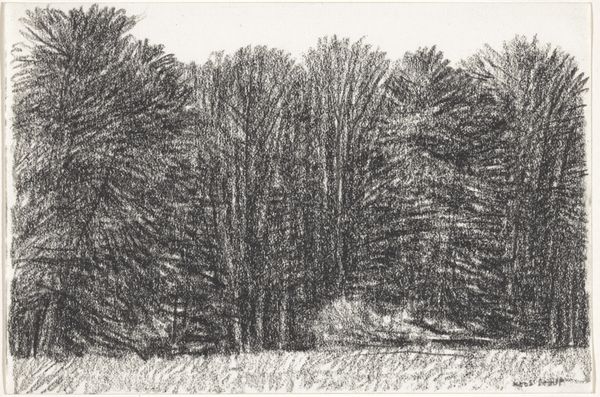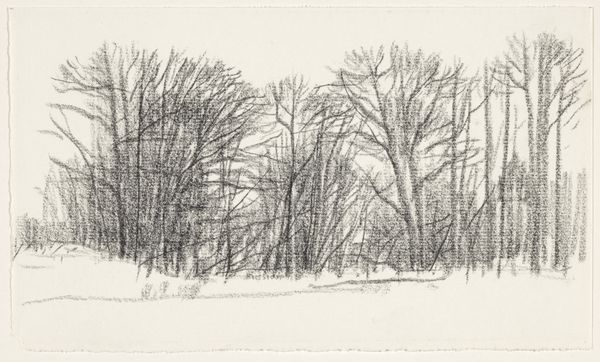
drawing, print, etching
#
vegetal
#
drawing
#
natural shape and form
#
natural formation
#
natural tone
# print
#
organic shape
#
white dominant colour
#
etching
#
landscape
#
natural light
#
forest
#
line
#
natural palette
#
warm natural lighting
#
natural form
Dimensions: height 132 mm, width 188 mm, height 85 mm, width 126 mm
Copyright: Rijks Museum: Open Domain
Curator: Here we have Kees Stoop’s print titled "Bos," believed to have been created sometime between 1944 and 1990. It’s an etching. Editor: You know, right off the bat, I’m getting a real wintry vibe from this. Bare trees, maybe even a dusting of snow suggested in that field…it feels cold and still. Curator: The choice of medium, etching, really lends itself to that atmosphere. The fine lines create a sense of depth and detail in the forest scene. The landscape genre itself evokes Romanticism, with a modern treatment of light. The starkness almost acts as a critique of idealized depictions of nature. What’s illuminated, and why? Editor: Critiques aside, I keep getting pulled into that light, too! It hits the front of the forest and really pops those spindly branches out. It makes me think of all those hidden things nestled inside that wooded space—you know, like secrets? The lack of color only heightens the dramatic effect. Curator: Precisely! Think about post-war Netherlands— the landscape is often a site of trauma, of reflection, where themes of reconstruction and collective identity emerge. The monochromatic palette could reflect scarcity but is primarily the result of etching, where tonal gradations reflect degrees of mark-making on a plate rather than pigment. What social narratives does a simple landscape conceal? Editor: Yeah… hidden history. So, with this work, Stoop’s inviting us to contemplate—in both senses of the word, like looking, but also deeply considering. There is some power to seeing landscapes without any human subjects. Curator: It refocuses our gaze. As an etching, we must also account for class. Prints were some of the first mediums to bring fine art to a middle class. Did access influence public sentiments? Editor: Okay, that is making me rethink what I see here now, knowing how social forces can be at play even in how the forest is being visualized. Curator: The layers of interpretation with artworks like this are what make them so rewarding to explore. We project, analyze, learn, and grow through visual arts. Editor: Amen to that! I am still cozying up to that initial wintry reading and am glad to better understand the artwork’s more historical elements, and how to contemplate their relationship to me as the viewer.
Comments
No comments
Be the first to comment and join the conversation on the ultimate creative platform.
